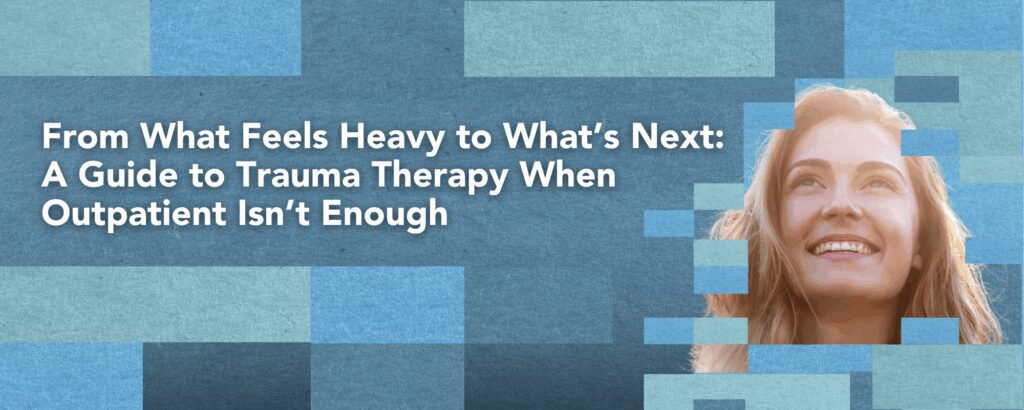
What Is Imaginal Exposure Therapy?
Benefits for OCD, Anxiety, and Related Disorders
What Is Imaginal Exposure?
Exposure response prevention (ERP) is a type of cognitive behavioral therapy where individuals gradually face their fears, while resisting the safety behaviors they would typically engage in when confronted with these fears. ERP is considered the gold standard treatment for obsessive-compulsive disorder and anxiety disorders and can help people shift their relationship to the thoughts, situations, and physical sensations that trigger anxiety and distress.
With ERP, individuals have the opportunity to create new learning about their fears, as well as their experience of anxiety. There are different types of exposures that patients can use to confront their fears and create new safety learning. One powerful type of exposure exercise is imaginal exposure therapy.
Imaginal exposure therapy is a type of exposure-based treatment that helps people confront and process distressing thoughts, memories, or fears that can’t be easily recreated in real life. It’s commonly used in the treatment of OCD and post-traumatic stress disorder (PTSD).
In imaginal exposures, patients face feared thoughts and scenarios through vivid imagery and script writing. This allows them to come into contact with anxiety triggers in a controlled way.
How it works
- The person vividly imagines a distressing situation, memory, or feared scenario in detail.
- The imagined scene is repeated and prolonged, often under the guidance of a therapist.
- Over time, the emotional response to the memory or thought decreases, which is a process known as habituation or desensitization.
Why use imaginal exposure?
Some fears or experiences:
- Are too dangerous, impractical, or impossible to recreate in real life (e.g., a traumatic event or fear of harming someone).
- Are internal, such as intrusive thoughts or mental images in OCD, and can’t be addressed through real-world exposure alone.
How is Imaginal Exposure Different?
Imaginal exposure is a useful exposure tool as it allows patients to approach fears that may be difficult or impossible to re-create through in vivo exposure. Imaginal exposure also allows patients a gradual way to approach higher-level fears early on in treatment. As patients increase their confidence with imaginal exposures in certain areas, they may be more willing to approach these triggers in real life.
For example, take Sophia, who has OCD and experiences obsessive fears about contracting an illness from public surfaces or restrooms. This results in excessive hand washing and avoidance of public restrooms. In ERP treatment, Sophia may combine in vivo exposure, such as touching a surface she would typically avoid like a bathroom door handle, and resist washing after, while then engaging in an imaginal exposure about becoming ill from this act. Being able to use different types of exposure allows Sophia to engage more effectively in ERP, coming closer into contact with her core fears.
Other types of exposure exercises include in vivo exposure, which involves directly confronting feared stimuli in real life, and interoceptive exposure, exercises intended to induce feared physical sensations such as increased heart rate or dizziness. Imaginal exposure can be used in combination with in vivo and interoceptive exposure.

How to Use Imaginal Exposure Therapy as Part of ERP for OCD and Anxiety
ERP generally consists of patients first identifying their specific triggers, which are the thoughts, objects, situations, people, places, events or physical sensations that provoke anxiety and distress. These are typically listed into a “hierarchy” with patients identifying their subjective units of distress for each item, one being the lowest level of distress, and 10 being the highest. It is imperative for patients also to identify their typical safety behaviors for each anxiety trigger, whether these are physical or mental compulsions for individuals with OCD, or other safety behaviors such as avoidance, distraction, or reassurance seeking. It is also helpful to explore core fears that may be underlying specific anxiety triggers.
For example, someone with social anxiety and identified triggers of public speaking, going to a party, and introducing themselves to a new person may have a core fear of being rejected. An individual with OCD obsessions related to harming himself or others and excessive checking compulsions may have a core fear of losing control. Targeting core fears in ERP can make exposures far more effective and generalizable to other hierarchy items.
Once a hierarchy is established, you may recognize certain triggers that lend themselves well to imaginal exposure. Either due to the nature of the trigger being difficult to complete in vivo exposure to, or the level of distress for the patient, imaginal narrative exposures may be a useful intervention.
Imaginal exposures are most effective when they:
- Are written from the first-person perspective: “I get up in front of a crowd of 100 people and feel my voice began to crack as I speak my first words.”
- Are detailed and specific: Include details in your imaginal scripts that bring your specific fears to life. Include descriptions of what you are seeing, smelling, and feeling, as incorporating senses can activate fear networks more effectively. Include your physical and emotional reactions, as well as real-life details such as the actual names of family members/friends who might be involved.
- Target core fears: Include content in the imaginal exposure that directly incorporates core fears. For example, in Sophia’s case above, if her core fears are around becoming ill and not being able to care for herself or her family, and becoming a burden, her imaginal exposure might include these outcomes.
- Lean into uncertainty: For individuals who experience OCD or anxiety, accepting and learning to live with the inevitable uncertainty around us is a crucial part of treatment. You might consider having your imaginal exposure incorporate uncertainty vs. a worst-case outcome if this is an area that is difficult for you to accept. “I may or may not contract an illness and be unable to care for myself.”
Imaginal exposure can be effective as a written narrative or an audio recording. Once you have written or recorded your narrative, you will work on repeatedly reading or listening to this, ideally in multiple different settings, such as in treatment, and at home for homework. During this exposure process, you will want to ensure you are not engaging in subtle rituals or safety behaviors, including mental processes such as telling yourself, “This could never actually happen,” to reduce anxiety. You will monitor your subjective units of distress level as you read the scenario and take note of the reduction over time in your anxiety response.
ERP allows for a shift in the relationship with feared thoughts and scenarios. Instead of reinforcing, “I must avoid thinking about this at all costs,” it allows you to intentionally face distressing thoughts and create space to say, “I can handle these thoughts and even notice the way my anxiety decreases with them over time.”
Who Can Benefit from Imaginal Exposure
Imaginal exposure can be a useful tool for anyone engaging in ERP, which may include individuals with obsessive-compulsive disorder, social anxiety disorder, panic disorder and illness anxiety disorder. Imaginal exposure can help people come into contact with fears that may not be able to be recreated for in vivo exposures and can also be combined with other types of exposures to deepen safety learning. Imaginal exposure is also used in prolonged exposure, a gold standard treatment for PTSD where patients recall in detail past traumatic memories in order to decrease distress and increase acceptance.
Individuals with:
- Obsessive-Compulsive Disorder (OCD) – e.g., harm OCD, contamination, responsibility obsessions
- Generalized Anxiety Disorder (GAD) – excessive worry about future events
- Social Anxiety Disorder – fear of judgment or embarrassment
- Post-Traumatic Stress Disorder (PTSD) – processing past traumatic memories
- Other conditions involving intrusive thoughts or rumination
Benefits of Imaginal Exposure
Like any exposure exercise, imaginal exposure allows patients to practice reducing avoidance behaviors and directly approach their fears in a structured and therapeutic manner. This kind of exposure practice allows patients to see that their emotionally charged thoughts or fears can become less activating and stressful over time, when they approach them directly.

Common Misconceptions
There are many misconceptions about exposure response prevention. Conversations about ERP often get reduced to “doing scary things” or “thinking scary thoughts.” But the reality is, ERP is so much more. For individuals experiencing OCD or an anxiety disorder, these “scary thoughts” can feel all consuming. So many affected individuals are living in a constant battle to “just stop thinking about it,” finding that the more they fight, the more intense, frequent and debilitating these thoughts become. ERP offers a way to shift your relationship to these thoughts-to meet them with openness, acceptance, and the opportunity to look at them rather than from them. This kind of perspective can lead to increased freedom and clarity that many did not know was possible.
- It’s not just “thinking about scary things”
- It’s not harmful or re-traumatizing when done properly
- It’s not about suppressing thoughts, but learning to tolerate them
What to Expect in Treatment
ERP should always be done with a trained clinician who will guide you through the process, including the creation of your imaginal exposures. Consistency with any exposure, including the re-reading of imaginal exposures, is crucial for success in treatment. The more repetition you have of any exposure, the more opportunity you create to see your anxiety decrease. Following through with assigned HW allows you to generalize your safety learning to places outside of a treatment setting.

Overcoming OCD and Anxiety with Imaginal Exposure and ERP
Living with OCD or an anxiety disorder can be overwhelming, and, at times, all-consuming. But effective, evidence-based treatment is available. Imaginal exposure, when integrated thoughtfully into ERP, offers a powerful way to confront fears that can’t be accessed through real-life exposure alone. It helps individuals shift their relationship with distressing thoughts and build confidence in their ability to tolerate uncertainty.
With consistent practice and the guidance of a trained clinician, imaginal exposure can lead to meaningful progress, including less anxiety, fewer rituals, and more freedom to engage with life.
If you or a loved one is struggling with OCD, anxiety, or trauma-related symptoms, our team at Compass Health Center can help. Reach out to learn more about our specialized treatment options.


